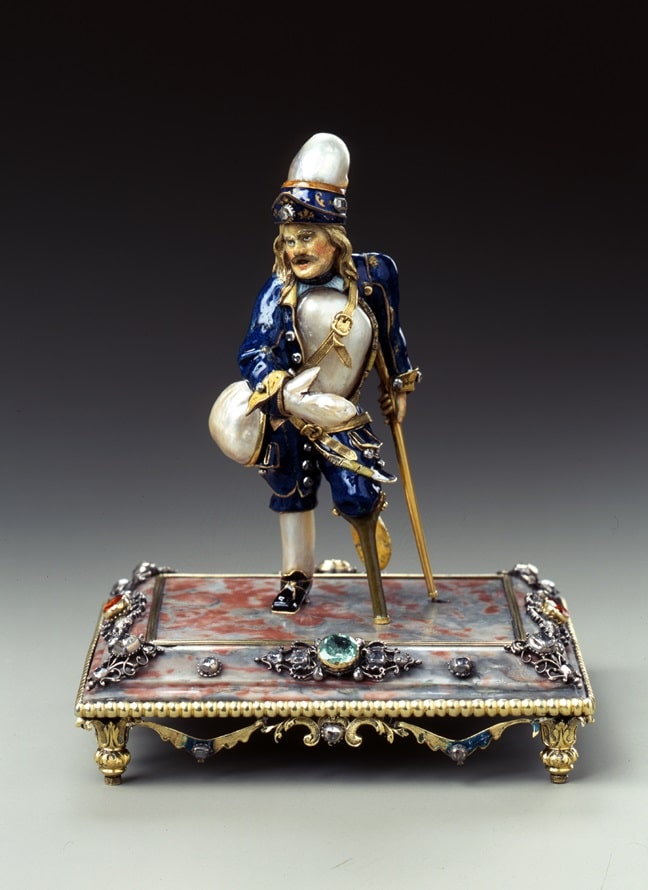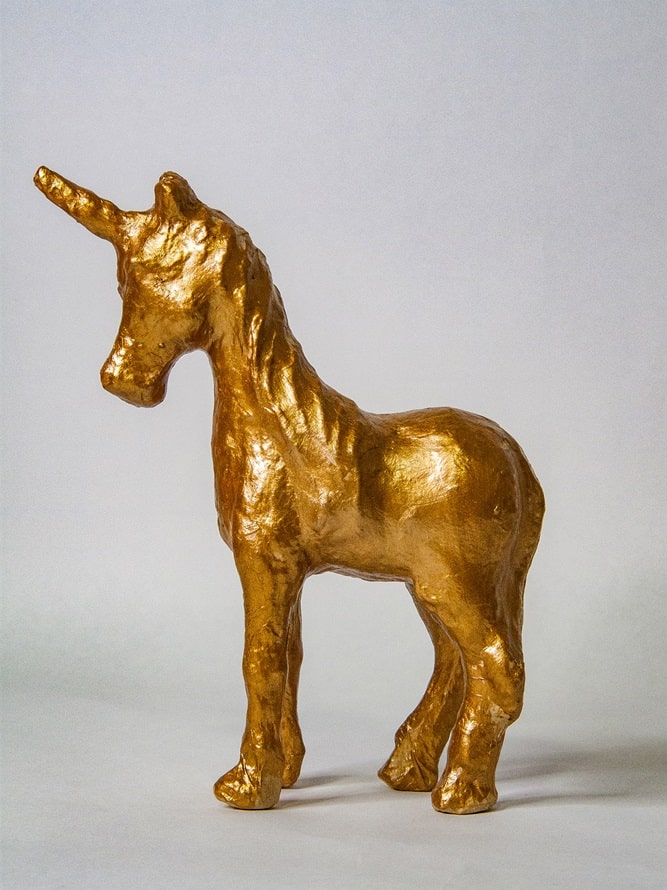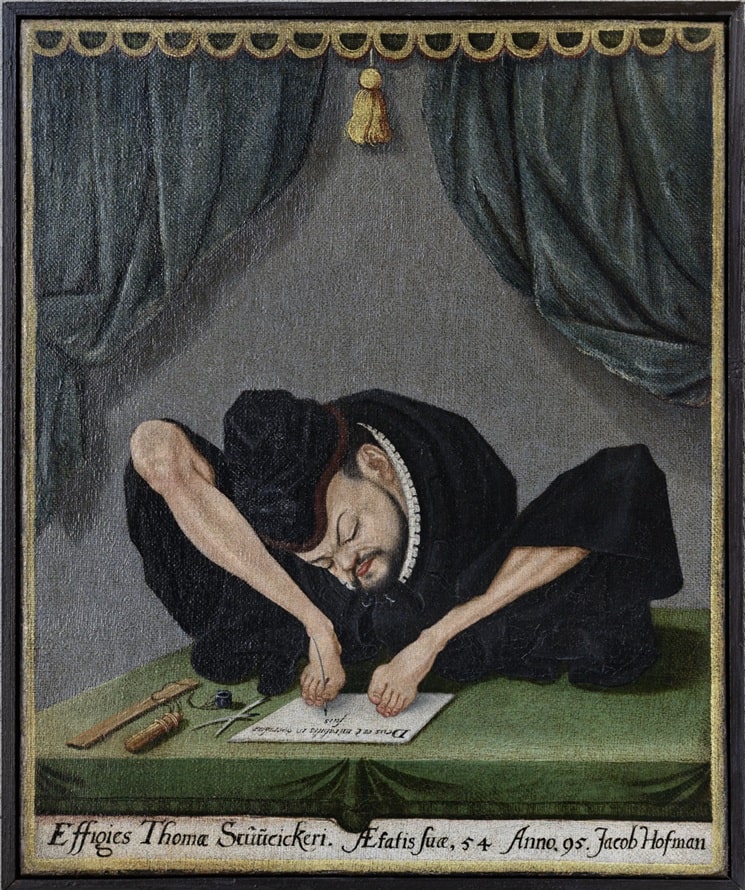From Thursday, 31 October 2024, the Staatliche Kunstsammlungen Dresden will present the exhibition ‘Admired, collected, exhibited. Disability in Baroque and Contemporary Art’. The exhibition is curated by Dirk Weber.
Image above: Jakob Hoffmann, Bildnis des Thomas Schweicker, 1595© Kunstkammer Georg Laue, München/London, Foto: Jens Bruchhaus
An iconic painting had been in the Elector’s Kunstkammer in Dresden since 1603. It depicts the foot artist Thomas Schweicker (1540-1602) from Schwäbisch Hall – a man who was born without arms and achieved national fame as a calligrapher.
The work was exhibited in the second room of the Kunstkammer alongside the portraits of the electoral family and friendly aristocratic houses. After the collection was dissolved in 1832, it became the property of the Picture Gallery and was eventually sold.
As part of the special exhibition ‘Admired, collected, exhibited. Disability in Baroque and Contemporary Art’, it is returning to Dresden for the first time on loan from the collector Thomas Olbricht. It is one of the centrepieces of a cabinet exhibition in the Sponsel Room of the New Green Vault, which explores the theme of disability in courtly art and is complemented by works by contemporary artists.
In addition to portraits and type specimens by Thomas Schweicker, the show will feature another 17th-century foot artist whose portrait and artwork have never been published before. A suit of armour of the ‘court dwarf’ Rupert von der Veste Coburg will also be on display, as well as various depictions of the dwarf court servant Hante, who probably came to Dresden from India.
The presence and display of disabled people in European royal and princely houses illustrates the ambivalence between privileged position, prestige and discrimination. People of short stature, for example, held offices as so-called ‘court dwarfs’. This area of tension can also be seen in the extremely popular ‘dwarf depictions’ of the time, which were particularly widespread in prints and treasury art. The exhibition also reflects the motif of acquired disability – for example as a result of war – or the invention of prosthetic aids in the mirror of the time.

In addition to the historical dimension, the exhibition also looks to the present day. The four artists Eric Beier, Eva Jünger, Steven Solbrig and Dirk Sorge have developed different contributions to expand the presentation on a curatorial and artistic basis and to critically scrutinise established norms. The works will be on display in the special exhibition and as an intervention in the permanent exhibition of the New Green Vault.
A visual guidance system, conceived and designed by Eric Beier, will lead visitors from the Small Palace Courtyard to the Sponsel Room and the contemporary artworks. On the opening evening, Steven Solbrig will give a lecture performance entitled ‘Soon We Will Be Legends? Of Beggars, Wonders, Crips in the Baroque and the Present’, which will focus on the ambivalences and continuities of the negotiation of the human body.
In addition to works from the Dresden State Art Collections, the 50 or so objects include valuable loans from the Olbricht Collection, the Germanisches Nationalmuseum in Nuremberg, the National Museum in Wrocław, the Kunsthistorisches Museum Vienna, the art collections of the Veste Coburg and the Esterházy Treasury in Eisenstadt.

Inclusion is an important concern for the Dresden State Art Collections in general and for this exhibition in particular. To ensure that the exhibition is as accessible as possible for all visitors, an accompanying programme has been designed with guided tours for visually impaired and blind people, for deaf people and people with dementia, an artist talk and a symposium in cooperation with the Saxon Service Centre for Inclusion in the Cultural Sector (SIK). All labelling texts, as well as the free accompanying booklet, are available in simple language in German and English.
On Wednesday, 4 December 2024, the SKD, in cooperation with the SIK, is organising the conference ‘Die Unbekannten. Symposium on the Representation of Disability in Art’ at the Albertinum. Many art disciplines look back on a centuries-old tradition in which disability does not play a separate role. A curatorial view that marginalises, exoticises or stigmatises disability often prevails. The event offers a framework for questioning practices of disability representation and discovering them as an enrichment of curatorial practice and established art discourse.
WHEN?
Exhibition dates: Thursday, 31 October 2024 – Monday, 03 March 2025
WHERE?
Sponsel-Raum des Neuen Grünen Gewölbes
Residenzschloss, Taschenberg 2
01067 Dresden






